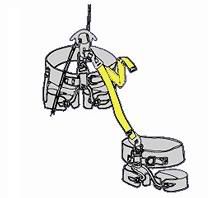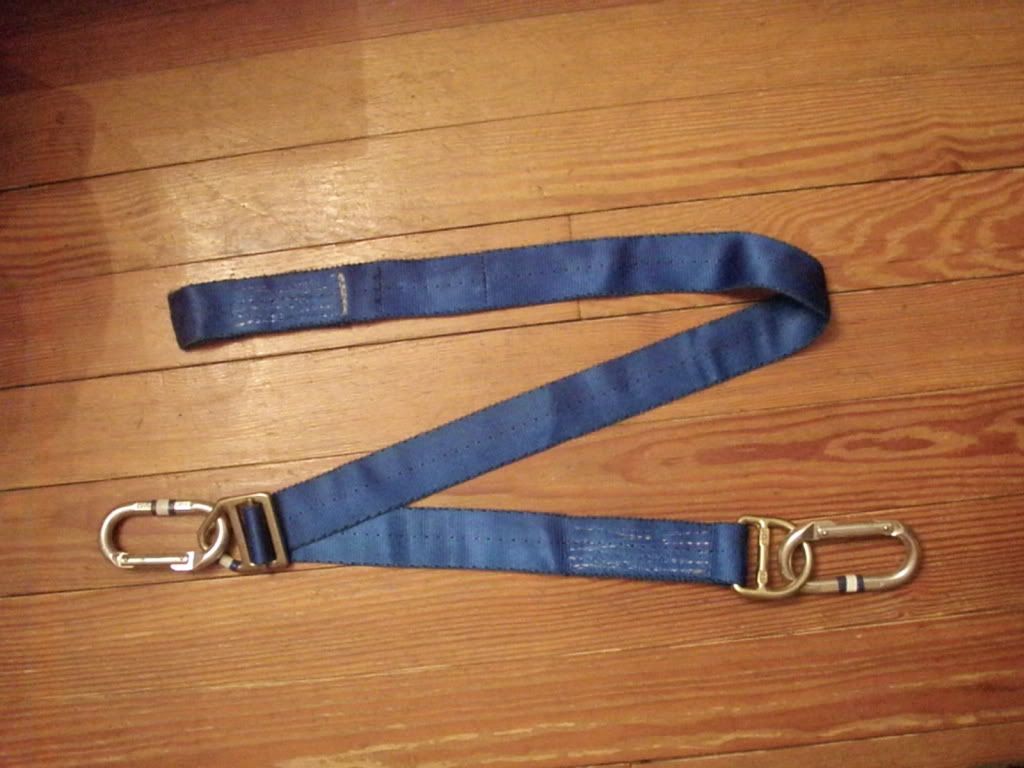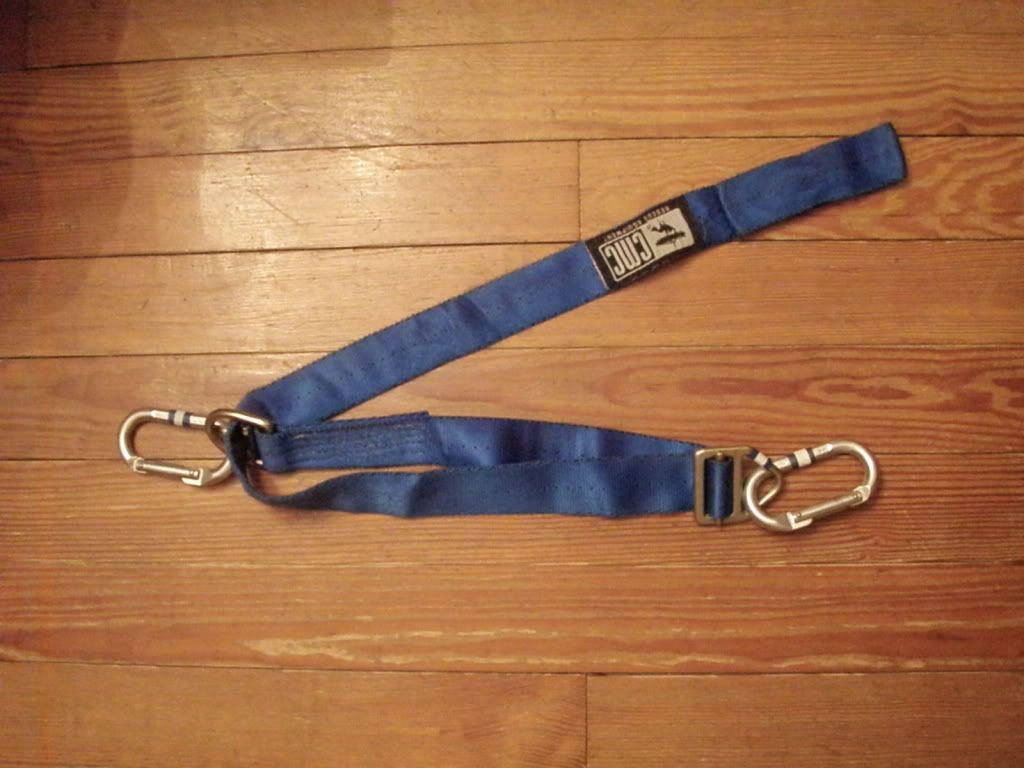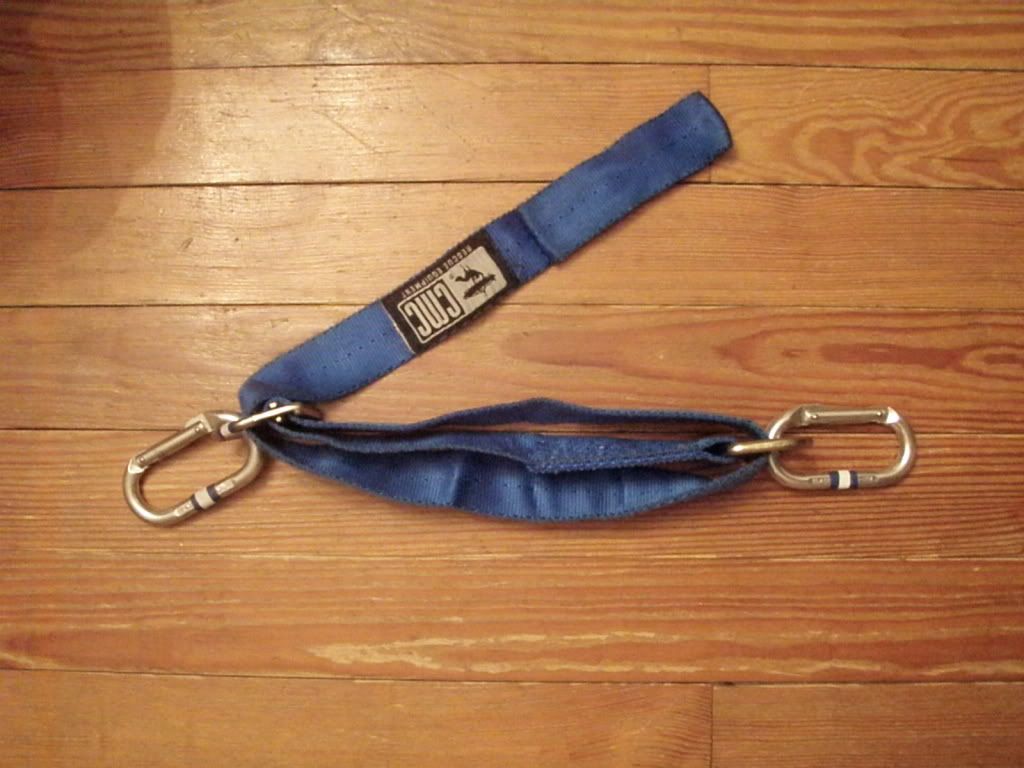- Posts: 506
- Thank you received: 2
SRT Rescue
- Davej
-
 Topic Author
Topic Author
- Offline
- Platinum Boarder
-

On TreeBuzz mattbc wrote:
"...but at a comp this year I realized something. If any tree climber was called in to help another climber out of a tree we need to at least understand how their system works."
Good point, if you're doing an in-tree rescue you need to quickly figure out the victim's system, which may be every different from what you climb on. Especially with many climbers integrating SRT into their work systems, the way to bring them down may not be obvious.
I'm interested in seeing more discussion about SRT rescue beyond lowering the climber from the ground. What if the climber is unconscious on a cinched running bowline SRT system? If they're on a RADS you're good to go, their descender is already inline. Pretty challenging though to climb up and look at some weird SRT configuration you've never seen before and make the right move.
-moss
Ok, I'll bite, but I've moved the thread here to avoid vast amounts of professional ridicule...
I'd say the system doesn't matter. In the most critical situation you're going to hook onto his saddle and cut his rope.
Please Log in or Create an account to join the conversation.
- nickfromwi
-

- Offline
- Platinum Boarder
-

- Posts: 821
- Thank you received: 0
The BEST way to rescue someone is to manage their system for them. Don't unclip anything, don't cut anything, just bring them down on their own system.
In this way, the time from when you get to the climber until you start descending should be about 5 to 30 seconds- no more.
If you have to bring them down on a whole different setup it could take a few minutes (that you don't have).
I've only tried the two-people-on-one-friction-hitch rescue on VT , distel, and other closed hitches. Have you tried it and had it work?
Also- it hurts (bad) to have another person hanging from your harness.
love
nick
Would you like a lanyard spliced up, or anything else for that matter??? Give me a call- 323-384-7770 or This email address is being protected from spambots. You need JavaScript enabled to view it.
Please Log in or Create an account to join the conversation.
- Baker
-

- Offline
- Platinum Boarder
-

- Posts: 375
- Thank you received: 0
The BEST way to rescue someone is to manage their system for them. Don't unclip anything, don't cut anything, just bring them down on their own system....it hurts (bad) to have another person hanging from your harness.
...
I must interject, Nick
As a high angle rescue tech, I've performed dozens, if not more, high angle pick-offs. I can tell you that in an emergency, using the victims system IS the fastest, but not always the safest or best. If the victim got into trouble in the first place, there is a good chance that they did something wrong to put themselves in that predicament. If their system fails, and they fall, who's fault will it be perceived to be? The rescuer's.
Additionally, if you hang the victim from your system via the rescue descender, in front of you and facing you, there is no pressure on YOU whatsoever. All the victim's weight is on the rescue descent system, suspended in front of you, not on you. Never hang someone from your saddle's "D". If it fails, you will both fall.
This image shows a quick and dirty system designed to get the vic to the ground as soon as possible to avoid or treat suspension trauma. The rescuer's harness is above, the victim below, using a pick-off strap. The strap can be replaced by any number of things, a simple loop of climbing rope or prusik cord works equally well.
The following isn't the best handout I've seen on the subject, but it might help you to understand the technique.
http://www.sml.co.za/pubs/Abseiling_TrainingHandout_03_PickOffRescues.pdf
Please Log in or Create an account to join the conversation.
- Davej
-
 Topic Author
Topic Author
- Offline
- Platinum Boarder
-

- Posts: 506
- Thank you received: 2
The BEST way to rescue someone is to manage their system for them. Don't unclip anything, don't cut anything, just bring them down on their own system.
My primary thought was that in a practice session no one is going to cut a $150 rope, so nobody practices that, but in a real emergency situation you would. If this is SRT it might be pretty slow if to manage their system you need a switchover to descent.
Please Log in or Create an account to join the conversation.
- Baker
-

- Offline
- Platinum Boarder
-

- Posts: 375
- Thank you received: 0
With a 2,3 or 4:1 pick off strap or improvised hauling system (see pdf) you can raise the victim enough to unclip them from their own system to effect the rescue.
Please Log in or Create an account to join the conversation.
- oldtimer
-

- Offline
- Platinum Boarder
-

- Posts: 785
- Thank you received: 3
I notice the rescuer did not even try to figure out what was wrong with the stuck person's gear to see if it could still be usable to lower the victim on its own set up.
Unless the victim/person in passed out and not responding you can probably "talk" most "victims" thru the steps to self rescue rather than attenting an actual transfer rescue.
I never had to do one so I am just speaking w/o personal experience and I hope never having to do one.
Baker mentioned he has done "Dozens" of these rescues. He must live in an area with a lot of climbing accidents.
I wonder if Treeman has ever done one in 25 years in the business? ( Not a practice one but and actual rescue one)
Please Log in or Create an account to join the conversation.
- Baker
-

- Offline
- Platinum Boarder
-

- Posts: 375
- Thank you received: 0
Ski lift rescues, rock ledge clingers, dogs (yes dogs)on sheer walls of strip mine pits, tree climbing kids (w/o harnesses)... Yeah, I've got quite a few actual rescues under my belt. If you include practice, which is absolutely essential, and instruction, I'd estimate I've done 30-35 or so.
Pick off strap:
http://www.cmcrescue.com/assets/dept_images/201106.jpg[/img[img]http://www.cmcrescue.com/assets/dept_images/201106.jpg[/img
Please Log in or Create an account to join the conversation.
- Davej
-
 Topic Author
Topic Author
- Offline
- Platinum Boarder
-

- Posts: 506
- Thank you received: 2
There is an improvised mechanical advantage used in the pdf. Also, the pick-off strap I often mention is, itself, a variable MA. lifting a victim a foot or more is totally doable w/ the strap.
The rescue strap is just a variable length strap, right? Where is the MA (mechanical advantage?)
Please Log in or Create an account to join the conversation.
- Baker
-

- Offline
- Platinum Boarder
-

- Posts: 375
- Thank you received: 0
Please Log in or Create an account to join the conversation.
- Baker
-

- Offline
- Platinum Boarder
-

- Posts: 375
- Thank you received: 0
Passing the strap around the bar on the connecting ring creates a 2:1 advantage.
One more pass, over the bar on the second ring, creates a nice, neat, self locking 3:1 mechanical advantage which enables the rescuer to raise a victim enough to release them from their system, without cutting anything.
Admittedly, because this system uses no pulleys, it has a bit of friction. The mechanical advantage is probably more like 2.9:1, but it works well enough. It has been suggested that a mini 3 or 4:1 system using pulleys would be better, but an additional prusik locking system would be needed. The pick-off strap auto locks, holding the victim securely, using the buckle itself. The buckle has a 4500# slip rating.
Note: The carabiners shown are for demonstration purposes only. In a live victim situation, only auto-locking carabiners with a 21kn rating would be used.
Please Log in or Create an account to join the conversation.
- Davej
-
 Topic Author
Topic Author
- Offline
- Platinum Boarder
-

- Posts: 506
- Thank you received: 2
Admittedly, because this system uses no pulleys, it has a bit of friction. The mechanical advantage is probably more like 2.9:1, but it works well enough.
Well, that is a neat strap. Thanks.
Please Log in or Create an account to join the conversation.
- ReginaARC
-

- Offline
- Fresh Boarder
-

- Posts: 5
- Thank you received: 0
This is another thread i find interesting... the aerial rescue certification scenarios i have been given have all been done on DRT... we only have one climber on our crew that uses SRT (marbar). The DRT rescues have been really fast, just clip your buddy to you with their lanyard as a backup, then clip your lanyard (which must have a snap with an opening that is close to your rope diameter) above their hitch to cause their knot to descend in unison with yours... this method works with any type of friction hitch and can save vital seconds. You can also use a pulley clipped to a strap to pull their knot down with you if you don't have the correct lanyard snap... Of course you could just use your hand to pull their knot down but the problem i see with using just the hand is that you then have to put a hand on each knot so you only have your feet to help move your decent path around an obstacle.
Now say the climber you are rescuing has a tangled or cut line... you have to descend double body weight on a single friction hitch.. I would think its a good idea to add a wrap to the hitch like in the sherrill book where it politely says something along the lines of "robust climbers require more wraps". In an SRT rescue this is pretty much the same circumstance as having one of the DRT setups unusable. My CMI rescue manual says to use a rack for double body weight BUT it also says:
"The seperate belay provides a safer evacuation. This is particularly true if you failed to anticipate the heavier load of you and the subject." This would happen when you cut the line and transfer the weight. I'm curious as to the difference between the extra wrap vs the rack, i would like to compare how both methods feel on descent, has anyone done this with double body weight?
oh and i have thought about the hair issue... it's one of the many reasons i'm not a fan of the blakes, it's close to the face... i noticed this being around female climbers for the first time at tanglewood... I only use the blakes once a year to recertify aerial rescue.
I TOTALLY agree that you must know how every climbers setup operates before climbing with them.
adam
Please Log in or Create an account to join the conversation.
- Davej
-
 Topic Author
Topic Author
- Offline
- Platinum Boarder
-

- Posts: 506
- Thank you received: 2
The DRT rescues have been really fast, just clip your buddy to you with their lanyard as a backup, then clip your lanyard (which must have a snap with an opening that is close to your rope diameter) above their hitch to cause their knot to descend in unison with yours... this method works with any type of friction hitch and can save vital seconds. You can also use a pulley clipped to a strap to pull their knot down with you if you don't have the correct lanyard snap... Of course you could just use your hand to pull their knot down but the problem i see with using just the hand is that you then have to put a hand on each knot so you only have your feet to help move your decent path around an obstacle.
Hi Adam. That is a good point you make about DdRT. I guess I keep thinking about the more difficult and confusing situations that are often proposed. In those situations it seemed to me that lifting a climber would always take longer.
Please Log in or Create an account to join the conversation.
- moss
-

- Offline
- Platinum Boarder
-

- Posts: 1915
- Thank you received: 93
-moss
Please Log in or Create an account to join the conversation.
- Baker
-

- Offline
- Platinum Boarder
-

- Posts: 375
- Thank you received: 0
Climb safe,
Baker
Please Log in or Create an account to join the conversation.
Join Our Mailing List
Tree Climbers International, Inc.
1284 Merry Lane NE
Atlanta, GA
30329-3923
USA
Email us
Phone: 404-377-3150
Proud supporter of:

Website by 3by400, a north Georgia web design team using Joomla!



